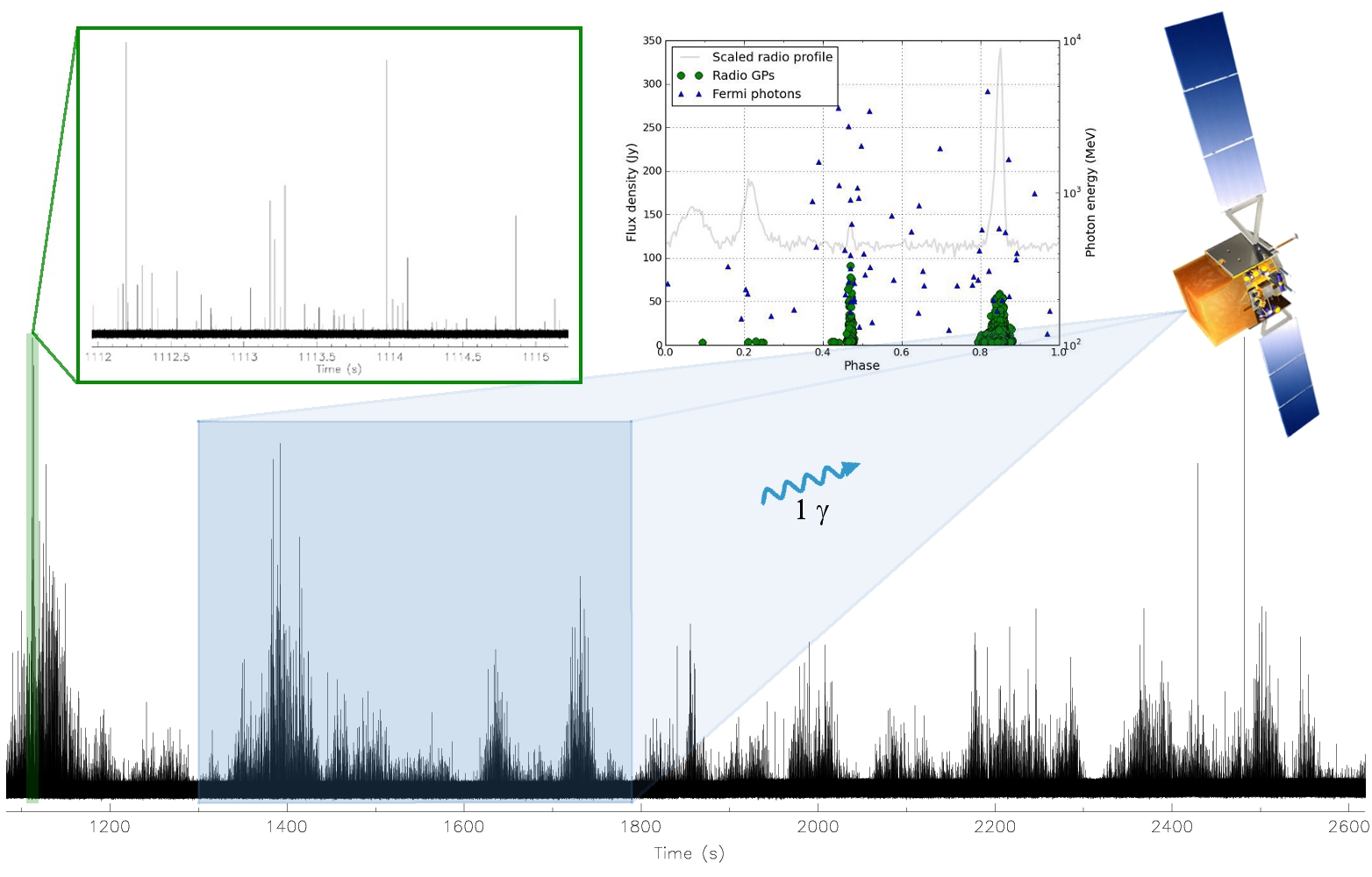Daily Image
05-04-2011Crab giant radio pulses: are they coincident with Fermi photons?
| Submitter: | Vlad Kondratiev |
| Description: | The Crab pulsar was discovered in 1968 by its remarkably bright radio giant pulses (GPs), which are only known for 7 out of 2000+ radio pulsars found so far. Together with their huge intensities (up to several million Jy) and short duration (down to ns), it indicates that this is a special form of pulsar radio emission. The profile components of high-energy emission are also perfectly aligned with their radio counterparts that points out to the same region in the pulsar magnetosphere and possible correlation between radio GPs and high-energy photons. Thus, searching for correlation of radio GPs and gamma-ray photons can allow to constrain the nature of GP emission, and help with understanding of pulsar emission mechanism, in general. To study this correlation, an international team including Vlad Kondratiev have carried out the campaign of simultaneous observations of the Crab pulsar at gamma-rays with Fermi and radio wavelengths with the 100-m Green Bank Telescope at the frequency of 8.9 GHz. The results have been recently published in ApJ (Bilous, Kondratiev et al. 2011, ApJ, 728, 110).Though the direct correlation was not found, we performed a thorough correlation analysis and put upper limits on gamma-ray flux enhancement during radio GPs. Our results suggest that GPs are due to changes in coherence of radio emission rather than an overall increase in the magnetospheric particle density. The image in the bottom shows the dedispersed time series of the Crab pulsar from one of the observing sessions with the GBT. The apparent intensity variations are due to diffraction scintillations. Each of the narrow spikes is not actually a single giant pulse but a series of dozens of them as shown in zoom-in plot on the top-left. The strongest spike there is the strongest GP detected during all 12 observing sessions with the GBT, and has the peak flux density of 152 Jy. The total simultaneous time between GBT and Fermi of 10.5 hours resulted in 77 photons detected by Fermi with energies above 100 MeV, i.e. on average we had 1 photon every 493 seconds. This time interval is depicted by blue shadowed area with artistic view of gamma-ray photon captured by Fermi Space Telescope. In comparison, during the same time there are many radio GPs (274 on average), and small photon statistics was a limiting factor in this analysis. The top-right plot shows the distribution of peak flux densities of GPs and energy of Fermi photons over the pulsar rotational phase. The scaled radio profile from one of the observing sessions is shown in grey for comparison. The profile components at the phases of ~0.85, 0.47, ~0.2, and 0.1 are interpulse (IP), main pulse (MP) and high-frequency components (HFC2, HFC1), correspondingly. |
| Copyright: | Vlad Kondratiev |
| Tweet |  |
